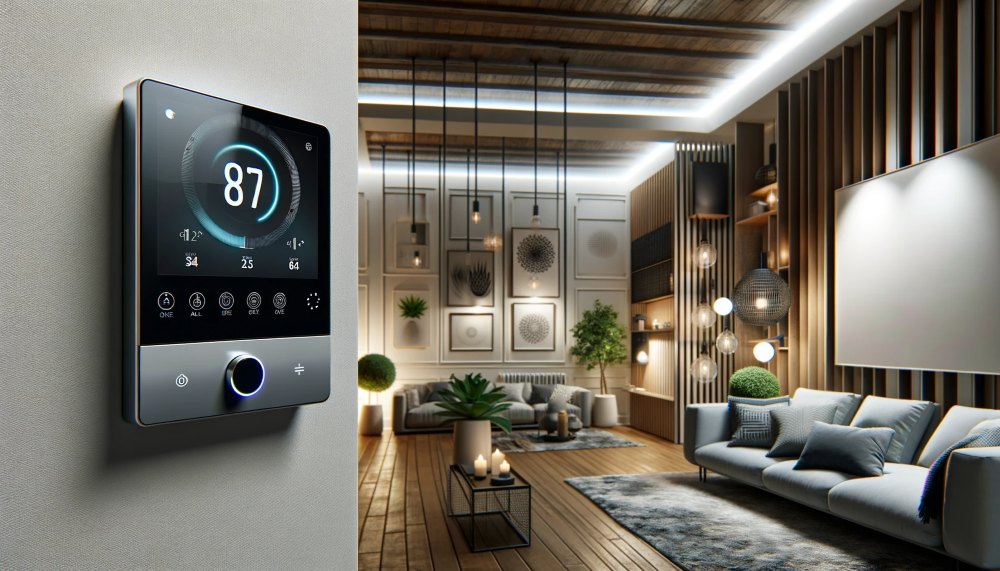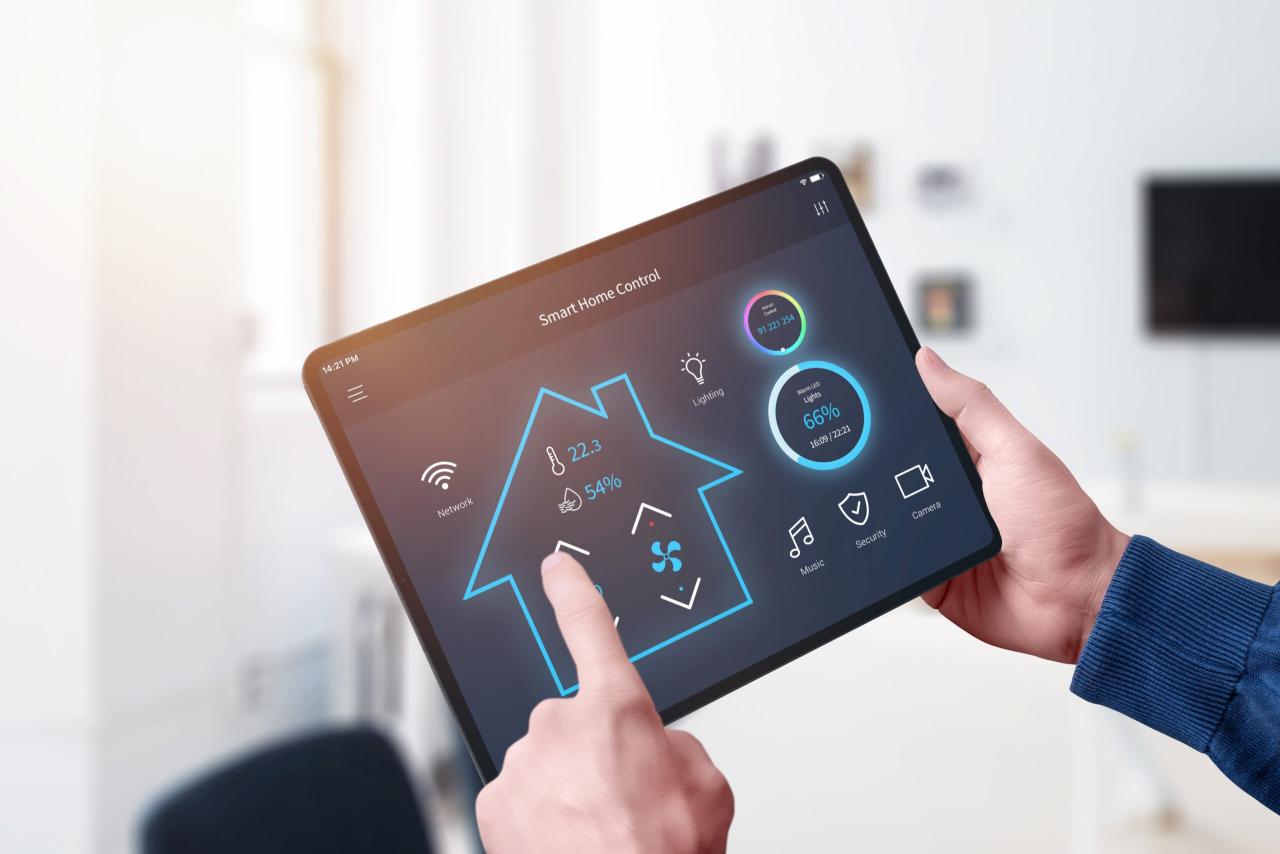Exploring the realm of Latest HVAC Tech for Energy-Smart Homes, this introduction sets the stage for a captivating discussion that delves into cutting-edge technologies and their impact on energy efficiency.
As we uncover the latest advancements in HVAC technology and their role in creating energy-smart homes, readers will gain valuable insights into optimizing heating and cooling systems for a more sustainable future.
Overview of Energy-Smart Homes

An energy-smart home is equipped with technologies and systems that optimize energy efficiency, reduce energy consumption, and promote sustainability. These homes utilize smart devices, sensors, and advanced automation to monitor and control energy usage effectively.Integrating HVAC systems into energy-smart homes is crucial for maximizing energy efficiency.
HVAC systems typically account for a significant portion of a home's energy consumption, making them a key focus for energy-saving efforts. By incorporating energy-efficient HVAC systems, homeowners can significantly reduce their overall energy usage and lower utility costs.Energy-efficient HVAC systems have a significant impact on overall energy consumption in energy-smart homes.
These systems are designed to operate more efficiently, using less energy to heat and cool the home effectively. By upgrading to energy-efficient HVAC systems, homeowners can lower their carbon footprint, reduce greenhouse gas emissions, and contribute to a more sustainable environment.
Latest HVAC Technologies
With the increasing focus on energy efficiency in homes, the HVAC industry has been constantly evolving to meet the demands of energy-smart homeowners. Let's explore some of the most recent advancements in HVAC technology that are revolutionizing the way we heat and cool our homes.
Smart Thermostats
Smart thermostats have become a game-changer in the HVAC industry. These devices are equipped with sensors and Wi-Fi connectivity, allowing homeowners to remotely control their heating and cooling systems. By learning the household's schedule and preferences, smart thermostats optimize energy usage, resulting in significant cost savings and reduced energy consumption.
Variable Refrigerant Flow (VRF) Systems
VRF systems are another cutting-edge technology that is gaining popularity in energy-smart homes. Unlike traditional HVAC systems that operate at full capacity, VRF systems adjust the refrigerant flow based on the heating and cooling needs of different zones in the house.
This zoned approach improves energy efficiency by only conditioning the areas that require it, leading to lower energy bills and increased comfort.
Heat Pumps with Inverter Technology
Heat pumps with inverter technology are designed to provide consistent indoor comfort while consuming less energy. By continuously adjusting the compressor speed to meet the heating or cooling demand, these systems eliminate the energy waste associated with frequent cycling on and off.
This results in improved energy efficiency, reduced noise levels, and extended equipment lifespan.
Smart Thermostats and HVAC Integration

Smart thermostats play a crucial role in energy-smart homes by optimizing HVAC system performance and enhancing energy efficiency. By integrating smart thermostats with HVAC systems, homeowners can achieve better control over their heating and cooling, leading to reduced energy consumption and lower utility bills.
Optimizing HVAC System Performance
- Smart thermostats utilize advanced sensors and algorithms to learn the homeowners' preferences and adjust the temperature settings accordingly.
- By automatically adjusting the temperature based on occupancy patterns, smart thermostats can ensure optimal comfort while minimizing energy waste.
- Some smart thermostats can also provide insights into energy usage patterns, helping homeowners make informed decisions to further improve energy efficiency.
Enhancing Energy Efficiency
- Smart thermostats can be integrated with HVAC systems to enable features such as geofencing, which adjusts the temperature based on the occupants' location.
- With remote access capabilities, homeowners can control their HVAC systems from anywhere using a smartphone or a computer, ensuring efficient energy use even when they are away from home.
- Integration with smart home ecosystems allows smart thermostats to work in tandem with other connected devices, such as smart lights and shades, to further optimize energy consumption.
Energy Monitoring and Management Systems
Energy monitoring and management systems play a crucial role in energy-smart homes by providing real-time data on energy consumption and enabling homeowners to make informed decisions to optimize energy efficiency.
Importance of Energy Monitoring and Management Systems
- These systems allow homeowners to track their energy usage patterns and identify areas where energy is being wasted.
- By monitoring energy consumption, users can make adjustments to their HVAC settings to reduce energy usage without sacrificing comfort.
- Energy monitoring systems help in identifying potential energy-saving opportunities and implementing strategies to lower utility bills.
Regulating HVAC Usage for Optimal Energy Efficiency
- Energy monitoring systems provide insights into the HVAC system's performance and efficiency, allowing homeowners to schedule maintenance and optimize its operation.
- By monitoring energy consumption in real-time, users can adjust temperature settings, airflow, and ventilation to ensure the HVAC system operates at peak efficiency.
- These systems enable users to set energy-saving modes based on occupancy patterns and preferences, ensuring optimal energy usage without compromising comfort.
Integration of Energy Monitoring Tools with HVAC Systems
- Energy monitoring tools can be integrated with smart thermostats and HVAC systems to provide a comprehensive view of energy usage and HVAC performance.
- By analyzing data from energy monitoring tools, HVAC systems can automatically adjust settings to minimize energy consumption during peak hours or when the home is unoccupied.
- Integration of energy monitoring tools with HVAC systems enables proactive energy management and optimization, leading to significant energy savings over time.
Epilogue

In conclusion, the evolution of HVAC technologies for energy-smart homes offers a promising path towards reducing energy consumption and enhancing overall efficiency. By embracing these innovations, homeowners can take significant steps towards a greener and more cost-effective living environment.
Quick FAQs
How can smart thermostats benefit energy-smart homes?
Smart thermostats optimize HVAC performance by adjusting temperature settings based on usage patterns, resulting in reduced energy consumption and cost savings.
What are some key features of the latest HVAC technologies?
The latest HVAC technologies include variable-speed compressors, zoning systems, and advanced air filtration, all aimed at improving energy efficiency and indoor comfort.
Why is energy monitoring crucial for energy-smart homes?
Energy monitoring systems help track energy usage and identify areas for improvement, allowing homeowners to make informed decisions to optimize HVAC efficiency and reduce waste.








